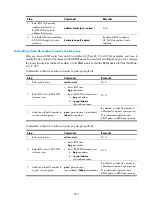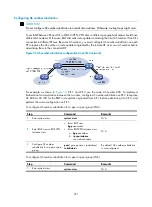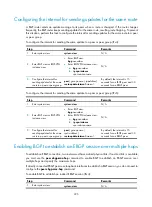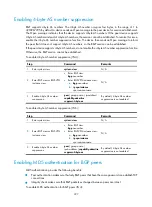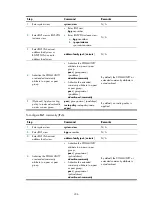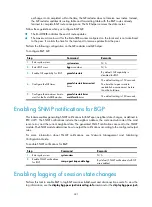
234
Step Command
Remarks
2.
Enter BGP view or BGP-VPN
instance view.
•
Enter BGP view:
bgp
as-number
•
Enter BGP-VPN instance view:
a.
bgp
as-number
b.
ip vpn-instance
vpn-instance-name
N/A
3.
Enable BGP route refresh for a
peer or peer group.
•
Enable BGP route refresh for the
specified peer or peer group:
peer
{
group-name
|
ipv6-address
}
capability-advertise
route-refresh
•
Enable BGP route refresh and
multi-protocol extension
capability for the specified peer
or peer group:
undo peer
{
group-name
|
ipv6-address
}
capability-advertise
conventional
By default, BGP route refresh is
enabled.
4.
Return to user view.
return
N/A
5.
Perform manual soft-reset.
refresh bgp
{
ipv6-address
|
all
|
external
|
group
group-name
|
internal
} {
export
|
import
}
ipv6
[
unicast
] [
vpn-instance
vpn-instance-name
]
N/A
Protecting an EBGP peer when memory usage reaches level 2
threshold
Memory usage includes the following threshold levels: normal, level 1, level 2, and level 3. When the
level 2 threshold is reached, BGP periodically tears down an EBGP session to release memory resources
until the memory usage is below the level 2 threshold. You can configure this feature to avoid tearing
down the EBGP session with a specific EBGP peer when the memory usage reaches the level 2 threshold.
For more information about memory usage thresholds, see
Fundamentals Configuration Guide
.
To configure BGP to protect an EBGP peer or peer group when the memory usage reaches level 2
threshold (IPv4):
Step Command
Remarks
1.
Enter system view.
system-view
N/A

